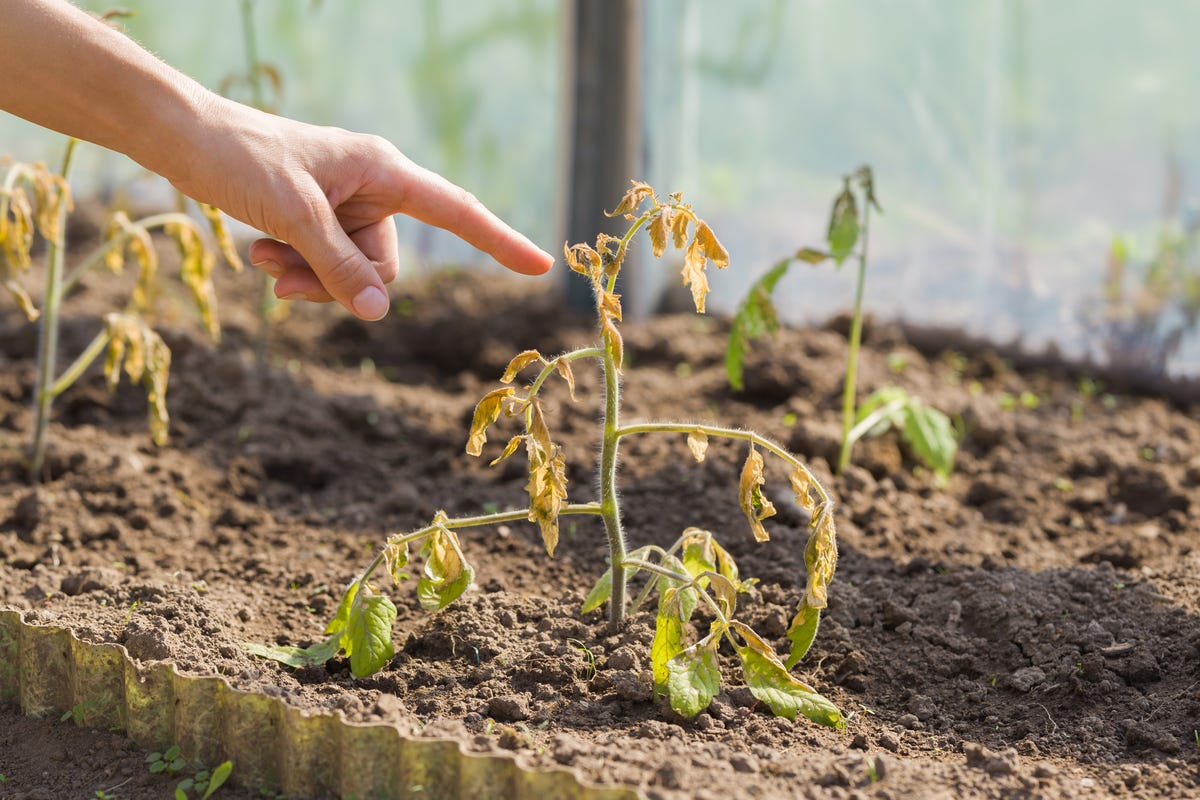I Killed My Wife's Tomatoes With Electroculture!!!
How a misguided garden experiment turned into a lesson in humility & scientific understanding.

They say a little knowledge is a dangerous thing… Yet when I tried to apply electroculture to my wife's garden, I learned just how true that could be."
Long ago when I first started on this journey, long before the current craze of spiral antennas, before we really knew how little electricity plants needed as a boost to accelerate their growth in the garden - I started using normal modern power supplies (like cell phone chargers) to power my experiments.
Before I get into the story of what happened, if you’re not in the know, electroculture is the science (and art), of applying electricity to plants to make them grow better. With this approach, you can bear witness to the most amazing of effects:
Increased germination
Faster growth rates
Larger-than-normal growth
Earlier harvests
Sweeter, more nutrient-rich foods
And so on!
When I started with electroculture in the 2010 timeframe, no one else was working on it on a practical level - at least no one I could find spending every waking moment looking into it. So all of the reading I’ve done was based on old books and some university lab-scale scientific papers on the subject.
Based on my background as an electrical engineer designing digital electronic products and such, I was most familiar with direct-current electricity (DC) - the form of electricity in 99% of consumer electronics, and found myself drawn towards using this approach in my garden. This also was the approach used by many of the historical figures in the electroculture space, like the Russian scientist Spechnew, and many others, including a number of university research labs, like U. Mass, Amherst back in the day.
So, there I am, early in my journey, experimenting in the garden, in the basement under grow lights in pots, and I’m seeing amazing results. I figured out how to get it to work at small scale, using battery chargers in the basement.
Then I thought, why not try it with a battery, outdoors??? Hey… my wife just bought and planted about half a dozen tomato plants… Surely she wouldn’t mind if I improved her tomato’s growth, flavor and so on, right? So I proceeded without asking her - as it was a surprise!
Excited about all of this, from my earlier experiments, I used anywhere from 1.3 to 5 Volts, and I figured if I use two D-cell batteries, then the system will last a very long time, and produce output all season long.

In my prior experiments, I would run stimulation for 24x7 timeframes with amazing results… so this shouldn’t be an issue, right???…
WRONG!
So for the first few days after I installed it, everything was just fine. No changes occurred just yet, but when we had our first thunderstorm - that’s when everything changed!
The next time I went outside, just a day after the storm, I was expecting to see lush plants further boosted by the added nitrogen in the air and the additional electrical inputs from the thunderstorm. But as you know, that wasn’t the case. Instead, I saw drooping & dead tomato plants that looked limp & rotting. I was totally surprised -
What the heck happened??
After I thought about it, I realized my mistake…. All the time that I’ve been doing experiments, it’s been in a controlled environment where I controlled the amount of electricity going into the soil, the moisture in the soil, and so on. In this case, the extremely wet soil along with the high-currents that were available within these batteries created the same effect as placing a wrench across the terminals of a car battery - a really hot and dangerous short circuit!!!
It turns out that finding success with electroculture involved quite a bit more that blindly putting electricity into the ground.
In my case here, the key problem I ran into was that I didn’t properly “design” the way power was to be transferred into the garden. If I took the time to fully understand the physics of power transfer in a soil setting, let alone in all soil conditions, I could have made made the power circuit work properly - which would have prevented this type of situation from ever occurring. To get around this, additional knowledge was needed…
Making mistakes like this became part of the inspiration for my book, Electro-Horticulture: The Secret to Faster Growth, Larger Yields, and More… Using Electricity! - where I teach people how to do electroculture right, under all conditions.
In my book I teach the essentials of electroculture from a practical scientific standpoint. It was written slowly, over time, thoroughly researched, and not written with AI. Pick up a copy today via the link above! If you want more, I design and sell unique electroculture products for the experimenter and serious electroculture grower alike, available at my web-store, HarvestStorm.com - check it out!
Do you have any funny or complete electroculture failures, like mine? Let us know by leaving a comment!
- David “The Electrocutioner” Wechsler :)





